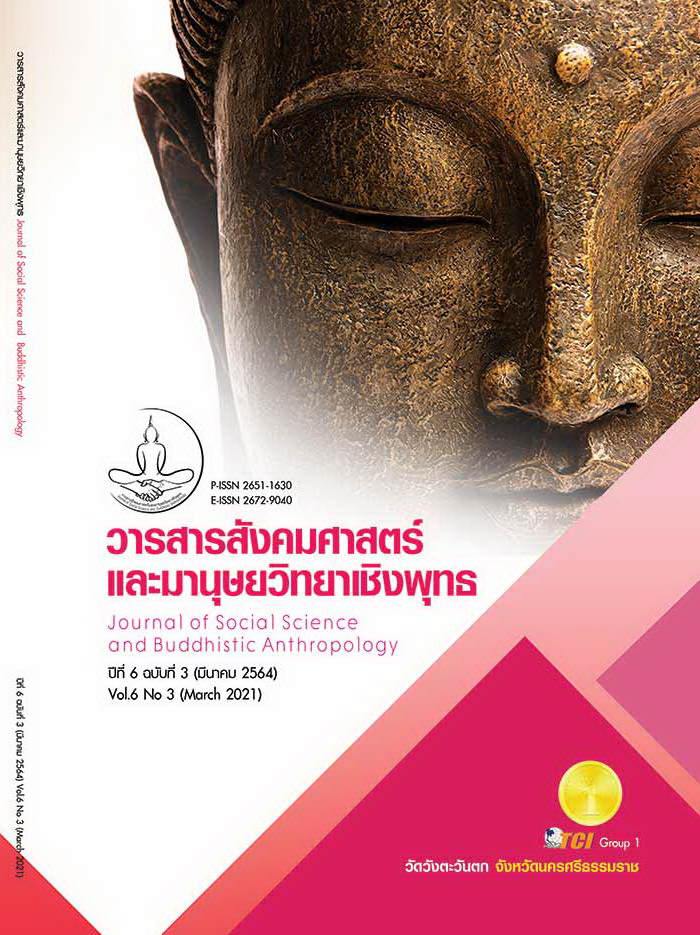THE CAUSAL FACTORS MODEL OF DECISION MAKING PURCHASING ONLINE THAT INFLUENCE ON CUSTOMER LOYALTY OF CONSUMERS
Keywords:
Customer Attitude, Marketing Factors, Technological, Decision Making Purchasing Online, Customer LoyaltyAbstract
The objectives of this article were: 1) to study the causal factors model of decision making of purchasing online consumers. 2) to study the causal factors of decision making of purchasing online that influence on customer loyalty of consumers. And 3) check the consistency of the causal factors model of decision making of purchasing online that influence on customer loyalty of consumers. The qualitative methods research by 1,600 questionnaires from consumers purchasing online and had more than 15 years old in Bangkok. Data collected by 4 generation are Gen Z, Gen Y, Gen X and Gen B (Baby Boomer). Data analysis using Structural Equation Modeling (SEM) statistical analysis is frequency, percentage, standard deviation, skewness and lurosis. The results found that: 1) the causal factors of decision making is customer attitude, marketing factors and technological, the consumer opinion is at high level for every factors. 2) Attitude, marketing factors and technological had direct influence on decision making 0.21 0.10 0.65 respectively and customer loyalty had receive influence direct and indirect from decision making, attitude, marketing factors and technological 0.40 0.32 0.25 0.07 respectively with statistical significance 0.01. And 3) the model simulations are consistent with empirical data based and statistical significance 0.01 on a harmonized index of accepted criteria. The index is: 2 /df = 1.671, CFI = 0.1.000, GFI = 0.980, AGFI = 0.970, RMSEA = 0.020 and SRMR = 0.018.
References
ดิจิทัลไทยแลนด์. (2563). สถิติดิจิทัลของประเทศไทย. เรียกใช้เมื่อ 10 ตุลาคม 2563 จาก ttps://blog.ourgreenfish.com/สถิติดิจิทัล-ของประเทศไทยจาก-digital-thailand-ประจำปี-2020
วิชิต อู่อ้น. (2554). การวิจัยและการสืบค้นข้อมูลทางธุรกิจ. กรุงเทพมหานคร: พรินท์แอทมี (ประเทศไทย).
สำนักงานสถิติแห่งชาติ. (2558). จำนวนประชากรแยกรายอายุ พ.ศ. 2558. เรียกใช้เมื่อ 3 พฤษภาคม 2559 จาก http://stat.dopa.go.th/stat/statnew/upstat_age.php
สำนักงานสถิติแห่งชาติ. (2558). รายงานสรุปผลที่สำคัญสำรวจการมีการใช้เทคโนโลยีสารสนเทศและการสื่อสารในครัวเรือน พ.ศ. 2558. เรียกใช้เมื่อ 3 พฤษภาคม 2558 จาก http://service. nso.go.th /nso/nsopublish/themes/files/icthh_report_ 58.pdf
Aaker, D. (1991). Managing Brand Equity Capitalizing on the Value of a Brand Name. New York: Free Press.
Anteneh, A. & Kaveepan, L. (2015). Analyzing Customer Service Technologies for Online Retailing: A Customer Service Life Cycle Approach. Journal of Computer Information Systems, 55(4), 73-80.
Belch, G. E. & Belch, M. A. (2009). Advertising and promotion: An integrated marketing communications perspectives. New York: McGraw-Hill College.
Dolnicar, S. & Jordaan, Y. (2006). Protecting Consumer Privacy in the Company’s Best Interest. Australasian Marketing Journal, 14(1), 39-61.
Eroglu, S. et al. (2003). E-satisfaction and e-loyalty: A contingency framework. Psychology and Marketing, 20(2), 123-138.
He, X. et al. (2011). Retail Competition and Cooperative Advertising. OR Letters, 39(1), 11-16.
Liu, J. & Ansari, A. (2020). Understanding Cusoumer Dynamic Decision Making Under Competing Loyalty Programs. Journal of Marketing Research, 57(3), 422-444.
Meuter, M. L. et al. (2000). Self-Service Technologies: Understanding Customer Satisfaction With Technology-Based Service Encounters. Journal of Marketing, 64(3), 50-64.
Naeem, M. & Samim, A. (2020). Product Brand Loyalty and Purchase Decision: A Comparative Study of Automobile Industry of Pakistan. International Journal of Entrepreneurial Research, 3(3), 76-87.
Riquelme, I. P. & Román, S. (2014). The Influence of Consumers’ Cognitive and Psychographic Traits on Perceived Deception: A Comparison Between Online and Offline Retailing Contexts. Journal of Business Ethics, 119(3), 405-422.
Schiffman, L. G. et al. (2003). Toward a better understanding of the interplay of personal values and the Internet. Psychology & Marketing, 20(2), 169-186.
Shimp, T. A. (2010). Integrated Marketing Communication in Advertising and Promotion International Ed. London: South Western/Cengage Learning.
Yun, Z. S. & Good, L, K. (2007). An Empirical Examination of Consumers’ Innovation Adoption: The Role of Innovativeness, Fashion Orientation, and Utilitarian and Hedonic Consumers’ Attitudes. Carolina: University of North Carilina.








